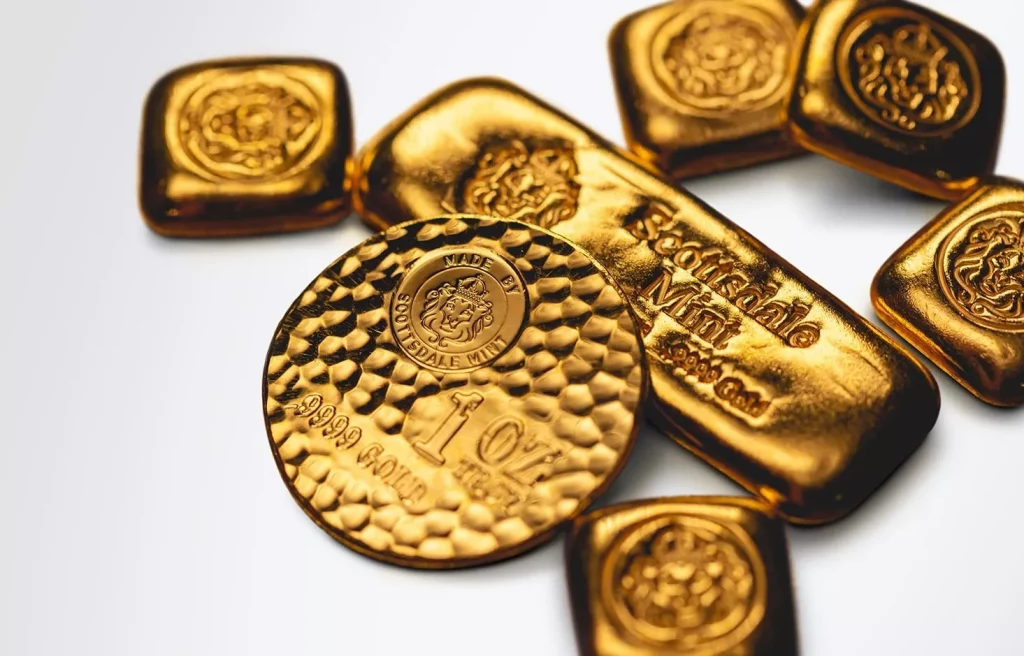Gold has long been revered as a store of value and a hedge against economic uncertainty. Its price movements over the decades reflect a complex interplay of geopolitical events, economic policies, and investor sentiment. By examining historical data, we can gain insights into current market behaviors and anticipate future trends.
A Look Back at Gold’s Price History
In the early 20th century, gold prices were relatively stable due to the gold standard, which pegged currencies to a fixed quantity of gold. For instance, from 1900 to 1933, the U.S. government maintained gold at $20.67 per ounce. However, the abandonment of the gold standard in 1971 marked a turning point. Freed from fixed exchange rates, gold prices became more susceptible to market forces.
The 1970s witnessed significant volatility. Economic turmoil, oil crises, and high inflation drove gold prices from $35 per ounce in 1971 to over $800 by 1980. This period underscored gold’s role as a refuge during economic instability.
The subsequent decades saw fluctuations influenced by various factors. In the 1990s, gold prices languished below $400 per ounce due to strong economic growth and low inflation. However, the 2000s brought renewed interest. The 2008 financial crisis, for example, propelled gold to over $1,000 per ounce as investors sought safety amidst collapsing financial institutions.

Identifying Patterns in Gold Price Movements
Analyzing historical data reveals recurring themes in gold’s behavior:
- Economic Crises: Gold often rallies during financial downturns. The 2008 crisis and the COVID-19 pandemic both saw significant upticks in gold prices, as investors fled to safety.
- Inflation and Currency Devaluation: Periods of high inflation or weakening currencies typically boost gold demand. The 1970s inflationary period and recent concerns over fiat currency stability have both contributed to gold’s appeal.
- Geopolitical Tensions: Conflicts and political uncertainties can drive investors toward gold. For instance, recent trade tensions and geopolitical disputes have played roles in gold’s price surges.
- Central Bank Policies: Actions by central banks, such as interest rate adjustments and quantitative easing, influence gold prices. Lower interest rates reduce the opportunity cost of holding non-yielding assets like gold, making it more attractive.
Current Market Trends and Their Historical Parallels
As of April 2025, gold prices have reached unprecedented levels, surpassing $3,500 per ounce. Several factors contribute to this surge:
- Economic Uncertainty: Ongoing trade disputes and concerns over global economic growth have heightened demand for safe-haven assets.
- Inflation Fears: Massive fiscal stimulus measures and supply chain disruptions have raised inflation expectations, prompting investors to seek protection in gold.
- Central Bank Purchases: Central banks, particularly in emerging markets, have increased gold reserves, reflecting a desire to diversify away from traditional reserve currencies.
These trends mirror past behaviors. The current environment resembles the 1970s, where economic instability and inflation drove gold prices upward. Similarly, the post-2008 era saw central banks’ accommodative policies and investor anxiety pushing gold to new heights.
Conclusion
Historical data underscores gold’s enduring role as a hedge against economic and geopolitical uncertainties. Recognizing patterns in gold price movements enables investors to make informed decisions. As current market conditions echo past scenarios, understanding gold’s historical performance becomes invaluable in navigating today’s complex financial landscape.
































